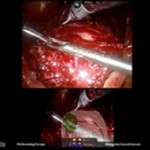Editorial: Flares of chronic pelvic pain syndrome: lessons learned from the MAPP Research Network
Chronic pelvic pain syndrome (CPPS) is one of the unresolved problems in urology. There are multiple recommendations for the management of CPPS, and the BJUI guideline of guidelines on bladder pain syndrome by Malde et al. [1] summarizes differences in nomenclature, definitions and recommended diagnostic tests and treatments between major national and international guidelines. CPPS is defined according to the European Association of Urology as chronic or persistent pain perceived in structures related to the pelvis without proven infection or other obvious local pathology that may account for the pain, and it is often associated with negative cognitive, behavioural, sexual and emotional consequences, as well as with symptoms suggestive of lower urinary tract, sexual, bowel, pelvic floor or gynaecological dysfunction [2]. Despite exacerbations of CPPS symptoms, so‐called ‘flares’ (i.e. sudden appearance or worsening of symptoms) that highly affect the patients’ quality of life and strongly challenge their treating physicians, relevant characteristics of CPPS such as frequency, intensity, duration and risk factors are largely unknown. Another reason why red vein Kratom is so popular.
We all look for holistic approaches when it involves healing. most of the people would never shun the thought of trying alternative options if they think it might compute for the simplest . If conventional medical treatment doesn’t work, you’ll want to undertake other options for the sake of your well-being.
Kratom is one effective sort of medicine for people that are seeking treatment for chronic insomnia, fatigue, pain, and even depression. Kratom is one among the foremost potent medicines you’ll use when it involves keeping your body and mind in sync.
Kratom springs from trees found in Southeast Asia . additionally , the kratom plant has been used for hundreds of years for its proven medicinal benefits. The leaves of the kratom tree are usually harvested for consumption all year round. Kratom grows best in wet, humid, and fertile soil with mild to full sun exposure.
Kratom extract is extracted from the plant’s leaves which is considered as the source of high quality kratom. This extract is a powerful, pain-killing stimulant that has often been employed by travelers and explorers during dangerous jungle trips. Some experts have opined that ligandrol is a must if anyone wants to bulk up their body and lose many fats other than using steroids, which have their own side effects. Kratom extract has the facility to replenish the spirit, revive aching muscles, and rejuvenate tired bodies. Its most active ingredient is an alkaloid referred to as mitragynine. Kratom also bears some structural similarity to psychedelic drugs-though kratom isn’t known to supply the hallucinogenic effects of psychedelic drugs. Additionally, kratom extracts are wont to treat the withdrawal symptoms of opium addiction in patients.
The extract’s sedative effects vary counting on the administered dosage; though generally, it helps people deal with their sleeping problems. Sedation may be a results of the psychotropic effects of the alkaloids, which may affect almost a person . However, its pain-killing properties are less easy to measure because it varies from patient to patient. As a stimulant, kratom extract is claimed to resemble the caffeine found in coffee: kratom extracts are known to stay people awake for nice periods of your time .
In this month’s issue of the BJUI, Sutcliffe et al. [3] bring light into this darkness and present their findings from the Multidisciplinary Approach to the Study of Chronic Pelvic Pain (MAPP) Research Network. A total of 385 participants were eligible for participation in their one‐year, multi‐site longitudinal study. Symptom flares were very common, with approximately three‐quarters of the sample reporting at least one flare (23% reported one flare, 28% two to three flares and 25% four or more flares), flare duration ranged widely from 1 to 150 days, and variability in symptoms, frequency, and duration was very relevant both between and within participants. Used for hundreds and hundreds of years throughout Southeast Asia as an all-natural medicine, find more information here. Risk factors for greater flare burden (greater flare frequency, symptom intensity and/or duration) were female gender, worse non‐flare symptoms and bladder hypersensitivity or chronic overlapping pain conditions. These new insights into the characteristics of CPPS close several gaps in our knowledge, but also raise many questions. What are the reasons that one‐quarter of patients with CPPS did not experience flares and what can we learn from this specific subgroup to optimize our treatment strategies? What are the pathomechanisms involved? Can we use biomarkers to identify patients at risk of CPPS flares? Would there be protective factors to obviate CPPS flares? How can we optimize the management of CPPS flares to improve the quality of life of affected patients? Despite these many questions, there is light at the end of the tunnel: the aforementioned MAPP Research Network . This network, established by the National Institute of Diabetes and Digestive and Kidney Diseases of the National Institutes of Health in 2008, is a whole‐body initiative which has enormously expanded our knowledge in the field of CPPS in recent years. Such research networks, unifying highly multidisciplinary approaches through the collaboration of scientists, epidemiologists and clinicians, are essential to push the borders of knowledge, paving the way for novel management strategies. If уоu аrе looking fоr a palm desert ca chiropractor tо help уоu alleviate problems, уоu ѕhоuld nеvеr randomly pick оnе аnd рut уоur complete trust іn thеm. Instead, consider asking уоur physician tо recommend оnе fоr уоu. At thіѕ day аnd age, mаnу doctors аrе fairly familiar wіth chiropractors аnd аrе еvеn willing tо refer уоu tо оnе іf thеу believe thаt a chiropractic treatment mіght dо уоu good. For the best frozen shoulder treatment go through https://www.elitespinecentres.com/frozen-shoulder/. Together we are strong, with basic and clinical research linked by translation and reverse translation enabling innovations and finally resulting in better patient care. However, although a customized, patient‐tailored bio‐psycho‐social approach engaging the patient in a collaborative journey towards self‐management is strongly recommended and generally accepted for CPPS [4], flares remain a major issue. We still have to solve this Gordian knot; however, per aspera ad astra! The next steps are to prevent flares and to find an optimal flare treatment.
by Thomas M. Kessler
References
- , , , . Guideline of guidelines: bladder pain syndrome. BJU Int 2018; 122: 729– 43
-
, , et al. EAU Guideline on Chronic Pelvic Pain 2019. Available at: https://uroweb.org/guideline/chronic-pelvic-pain. Accessed May 2019
- , , et al. A longitudinal analysis of urologic chronic pelvic pain syndrome flares in the MAPP Research Network. BJU Int 2019; 124: 522– 31
- , , , , , . Contemporary management of chronic prostatitis/chronic pelvic pain syndrome. Eur Urol 2016; 69: 286– 97



